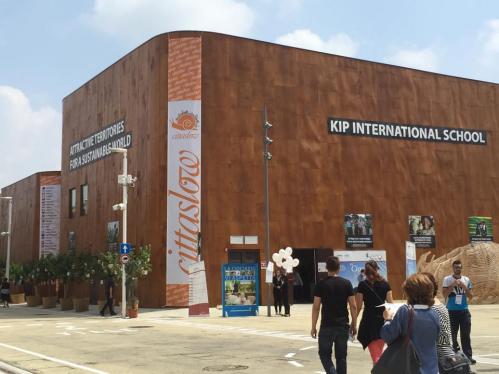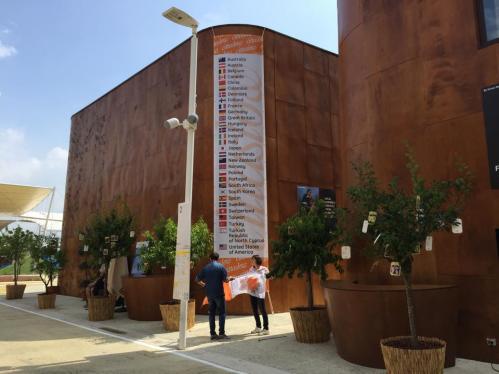June
EXPO 2015 Milan - Italy is exporting the Cittaslow idea all over the world


The ideal town is small but has a vibrant cultural and social life, lives well alongside nature and is convivial. It is largely located on a hillside, it has an ancient and historic centre and falls within a protected area or a park. It attracts a significant number of tourists and has accommodation for them, especially in innovative buildings such as the diffuse hotels and holiday homes. These features are not named in academic studies, nor in opinion polls, but come from the "Second Global Report on the Cittaslow Towns 2015". Cittaslow is an association of 189 towns of less than 50,000 inhabitants, located in 25 countries on five continents, including China, Japan, South Korea, South Africa, Australia and the United States. Founded fifteen years ago at the meeting of Slow Food and the Mayors of Orvieto, Greve in Chianti, Positano and Abbiategrasso, it spread near-spontaneously across the world thanks to the enviable reputation Italy enjoys as a country with the nicest small towns to live in in the world. To join the network it is necessary to undergo a very strict assessment process based on environmental, infrastructure, urban quality, hospitality and civic participation criteria.
A survey of Mayors belonging to the network from around the world (90 of whom responded) took place in early 2015, and offers a glimpse into "good globalisation" on a local scale, while making the negative impact of growing metropolitan gigantism evident. The average Cittaslow town has a resident population of about 10,500 inhabitants, 6% of which of foreign origin (8% in Italy, 6% in the rest of Europe, 5% in the rest of the world). They are mainly located in the hills (44% of the towns) or inland plains (22%), while the remaining third is divided between mountains (18%) and coastal areas (16%). The tendency to find towns with high-quality urban life in inland areas is particularly strong in Italy (hills plus mountains 79%), compared to the rest of Europe (dropping to 54%) and the rest of the world (47%). It is certainly the result of the morphology of our country but also of its historic characteristics.
In these high-quality small towns you live longer so that the proportion of residents over sixty-five is some 23% (in Italian Cittaslow towns it rises to 24% compared to a national average of 21.4%) but the younger generations are there too. The proportion of under 14 year-olds is 14% globally (13% in Italy and 15% in the rest of Europe). This young-elderly ratio is also determined by the fact that retired people move to towns with high quality of life, but also by young people engaged in creative or agricultural and tourist activities. It is a new social mix that revitalises areas once destined to be abandoned.
The Cittaslow towns are also high-value tourist areas, but an experiential tourism, to be enjoyed slowly and not on the run, emotionally involving, fascinating landscapes, the architectural fabric, good food, the hospitality of the local community, the attention given to community issues. In 73% of cases the Cittaslow towns around the world have a historic centre of notable architectural value. A figure that rises to 91% in Italy (70% in the rest of Europe, falling to 47% in the rest of the world). On average there are 1,109 bed places, of which 35% in hotels and 65% in other facilities. In Italy, however, the average is only 765 beds for each town but 53% of them in hotels. In 2014 average annual overnight stays were 65 thousand for each centre, making a total of 12.3 million visitors in the slow network.
The factor that leads to a higher quality of life in Cittaslow towns worldwide is an openness to nature, the countryside and culture. In 60% of the centres surveyed there are public or collective gardens cultivated by citizens. The global average is 15 per town (more in Europe and the rest of the world than in Italy), while there is a wide range of restaurants that offer local products – on average 12 per town. As for cultural facilities there are an average of 2 bookshops and 3 art galleries, very common especially in European towns. In 76% of the Cittaslow towns worldwide there is at least one theatre or a concert hall and in 81% a museum or historical site or archaeological site. Culture, conviviality and the rural life with a smart accent therefore lead to more liveable towns.
Underlying higher citizen satisfaction are the factors that led to it – a mix of functionality and beauty, the engagement of the heart and community experience, good food and crafts, human relations and solidarity. Foremost among the slow archetypes is landscape and the environmental and rural settingcontinuously cared for and preserved in 90% of the areas surveyed, then the food products that follow and develop the tradition of the place, true for 76% of the Cittaslow towns. In third place, in 61% of these towns there is a cultural endowment or an architectural, historical and artistic heritage to be treasured. Then the existence of traditional crafts (49%) and a restored historic centre (43%).
Cittaslow towns are also well governed and have the most advanced policies to administer the area. In 49% of the towns prestigious cultural events are held, in 28% there are policies for the promotion and protection of local products, in 23% waste management adopts the most advanced techniques, in 15% organic agriculture and support for local products are highly developed. In 14% energy conservation and renewable energy sources are central to public policy, in 12% policies for alternative mobility (cycling and walking, electric cars ...) are implemented, and then there are policies for hospitality, continuous training of operators, reducing noise and light pollution, water saving, bio-architecture, social innovation and involvement of citizens.
Belonging to the Cittaslow circuit is a factor in the sense of identity for citizens who in 11% of cases are involved and actively support the slow philosophy, while for a further 61% participation of residents and businesses in initiatives derived from belonging to the network stand out.
For 56% of Mayors responding, belonging to the network of Cittaslow has increased the fame of the town (68% outside Europe) and for 55% it has served for the promotion of local products (71% in Italy). For 46% the awareness of citizens has increased, providing an appropriate backdrop to the formation of a local identity that is open and modern. For 35% the quantity, but especially the quality, of tourist numbers has increased, finally for 22% belonging has improved planning, social cohesion and has been a spur towards the adoption of appropriate innovative technologies.
Finally a note of a political nature. Mayors were asked if in their country central government discriminates against small towns in favour of big cities. The phenomenon is largely Italian as 76% of the towns with the high quality of life feel disadvantaged by national policies, against 49% of European towns and 39% in the rest of the world. It is very strange that an Italian product, with a top reputation, is not adequately appreciated by national policies, despite the success that it enjoys at the global level.
DOWNLOAD PROF. GIUSEPPE ROMA PRESENTATION